



Category: All About Guns
Another Safe Queen


This handy Stevens Model 94B single-shot .410 shotgun still has a place in the hunting fields, and it’s darn hard to beat as a youth gun. Here’s a review.

Although common—in both the literal and the literary sense—Stevens single-shot, break-action scatterguns are somewhat difficult to research and document. Hundreds of thousands were manufactured under the Stevens name, but none were serialized until the Gun Control Act of 1968 required serial numbers. As a result, it’s nearly impossible to pinpoint when one was made.
The Tenite-stocked Model 94B variant shown here was made sometime between World War I and 1960. Stevens was purchased (after much drama surrounding a failed purchase attempt by New England Westinghouse) by Savage Arms in the spring of 1920. Most postwar guns are marked Savage, as is the one detailed here. Moreover, it’s marked with Savage’s Chicopee Falls address, which Savage left sometime around 1960.
Since the Stevens single shot is a simple, hardworking tool for putting small game in the pot, historical documentation mattered little. Few collectors pay them much mind, and these days, few hunters do, either. It could be said that single-shot field pieces are becoming an abandoned and forgotten breed.
Still, a sleek, simple one-shooter chambered in the mild .410 Bore is near impossible to beat as a youth gun. The 94B shown here weighs just 5.25 pounds, so it’s easy for small hunters to pack in the field. Operation is basic and intuitive, so safe handling is easier, too. With the break-action gun open, it’s immediately clear to all around that it’s in a safe condition. And unlike a semiauto or double-barrel gun, after one shot it’s not immediately ready to fire again with another press on the trigger, which is another safety-enhancing feature for young and inexperienced gunners flustered by the roaring flush of a forest grouse.
Most guns of this type are fitted with somewhat clunky wood stocks. However, some of the Stevens single shots featured Tenite stocks. Writer Phil Bourjaily once penned, “Much as I dislike plastic stocks,
I have a soft spot for Tenite, which is a wood cellulose plastic invented in the ’20s and very much a techno-polymer of its time. It was used for eyeglass frames, radios, telephones, and other items, and it’s still in use today. It pains me when people take perfectly good Tenite stocks off old guns and replace them with wood in a misguided attempt to add some class. There is nothing like the grain of fine AAA Tenite on an inexpensive shotgun. Plain, hardwood stocks certainly can’t compare.”
Mechanicals
Stevens Model 94B guns feature a single barrel that interfaces with a sleek, top-lever action with an exposed hammer. To take the gun apart, pull firmly down on the forearm tip. It’s secured by spring tension and will rotate down around 30 degrees. However, it does not come entirely free, so don’t apply too much horsepower.
Press the thumb lever to the right and rotate the barrel to the open position. It will disconnect from the action. The forearm will be left attached to the front of the action. Reassemble in reverse order.
To load, open the action using the thumb lever. Insert a .410 shotshell into the chamber and close.
To fire, simply cock the hammer and press the trigger. There is no safety per se; a rebounding halfcock hammer position serves that purpose.
Cocking the hammer requires a considerable amount of thumb strength, which is just fine. However, it pays to be cautious when lowering the hammer after an anticipated shot doesn’t come to pass. Be sure to pay attention and maintain good control or that heavy hammer can get away and fall, potentially causing an accidental discharge.
To unload, open the action. The spring-loaded ejector will send the empty or unfired shotshell zinging rearward.
Provenance
When my family and I relocated to Idaho, we became friends with the folks who had built our home. At one point, while poring over barn plans at his place, the builder began pulling old guns from his closet. He kindly loaned me the Model 94B you see here for review.
As he related to me, as a boy, he was bird-dogging the pheasants from a stretch of timber and brush for his father and uncle, when a mule deer doe stood up in front of him. An appropriate deer tag—his first—was in his pocket, and the .410 was in his fist. The deer was close, and a stout payload of lead pellets quickly turned his pheasant hunt into a successful deer hunt.
This particular Stevens 94B sports an easy-handling 26-inch barrel, and it is the epitome of handiness. Over the years, it has accounted for a lot of small game.
Rangetime
Grouse season isn’t quite open as I write this, but on my morning walk today I saw seven birds. I have a dog that’s enthusiastic but inexperienced on grouse, and she put several up into trees. When opening day comes around, I may have to put this nice old single shot to work. Meanwhile, to get a feel for how it shoots, I repaired to my back ravine with a handful of biodegradable clay targets. My wife flung them for me, and I managed to break most of them into charcoal-colored dust against the blue sky.
Function was flawless. Recoil was nearly indiscernible. Granted, I was firing 2.5-inch target loads, but still, it’s easy to see why kids love .410s so much.
If you’re a fan of simplicity and appreciate history, find one of these old single shots. You’ll pay between $75 and $250, depending on condition and chambering.
Such guns still have a profound place in the grand scheme of growing young hunters. Even though my children have access to compact pump and semiauto small-gauge shotguns, to my surprise, they’ve gravitated to these simple single-shot guns. I should have expected that because there’s just no gun type as intuitive as a little break-action, exposed-hammer shotgun.
Stevens Model 94B Specifications
- Manufacturer: Stevens/Savage Arms
- Type: Break-action, single-shot shotgun
- Gauge: .410 Bore
- Cartridge Capacity: 1 round
- Barrel: 26 in.
- Overall Length: 42 in
- Weight, Empty: 5.25 lbs.
- Stock: Tenite plastic
- Length of Pull: 13.75 in.
- Finish: Blued barrel, case-colored action
- Sights: Bead front
- Safety: Halfcock notch
- Trigger: 6.0-lb. pull (as tested)
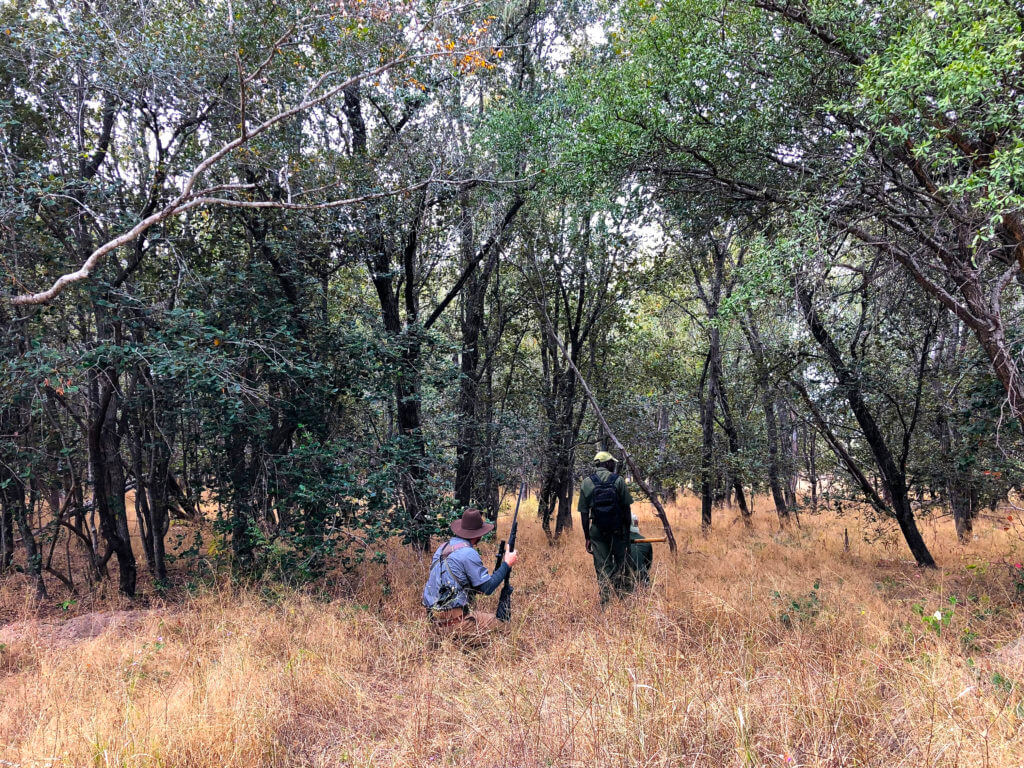
The author is presented with a shot at a giant buffalo, but the shooting light is poor and there is a screen of twigs in the way. Should he take the shot?
HUNTING CAPE BUFFALO
A long week of tracking and hunting Cape Buffalo lay behind us; a week of sorting through the muddy nighttime tracks left around a pan – the African version of a small lake or pond – and following the freshest of those tracks into the Mopane and Sandveldt jungle.
A week of staying ever alert for elephants, especially cows with calves. The mamas have no sense of humor and will do their best to annihilate unwary hunters. They like to stomp folks to jelly on the ground or use their trunk to grasp poor souls by a limb and beat them against a convenient tree. The thought has a way of inspiring you to pay attention to your surroundings and keep your rifle handy.
Every morning we checked around the pans and along dirt two-tracks, searching for the fresh tracks of buffalo. In the afternoon we might look again, often dragging a small bushy tree behind the Land Cruiser to wipe the dirt roads clean of signs, creating a fresh slate for the morning hunt. We would saw or hack trees and limbs from the roadways, littered there by elephants as they browsed their perpetual way toward another massive belly full of feed. They were irresponsible in their methods, pushing trees and breaking limbs every place, regardless of the inconvenience they caused.
LOCAL TECHNIQUE
The local trackers each carried a curious machete/billhook-shaped “Ponga”, using it for everything from chopping trees to digging holes or pointing out fresh tracks. They could cut their way through a thigh-sized limb in short order, swinging the Ponga with the practiced ease of a competition-level lumberjack. When I tried I didn’t have so much luck.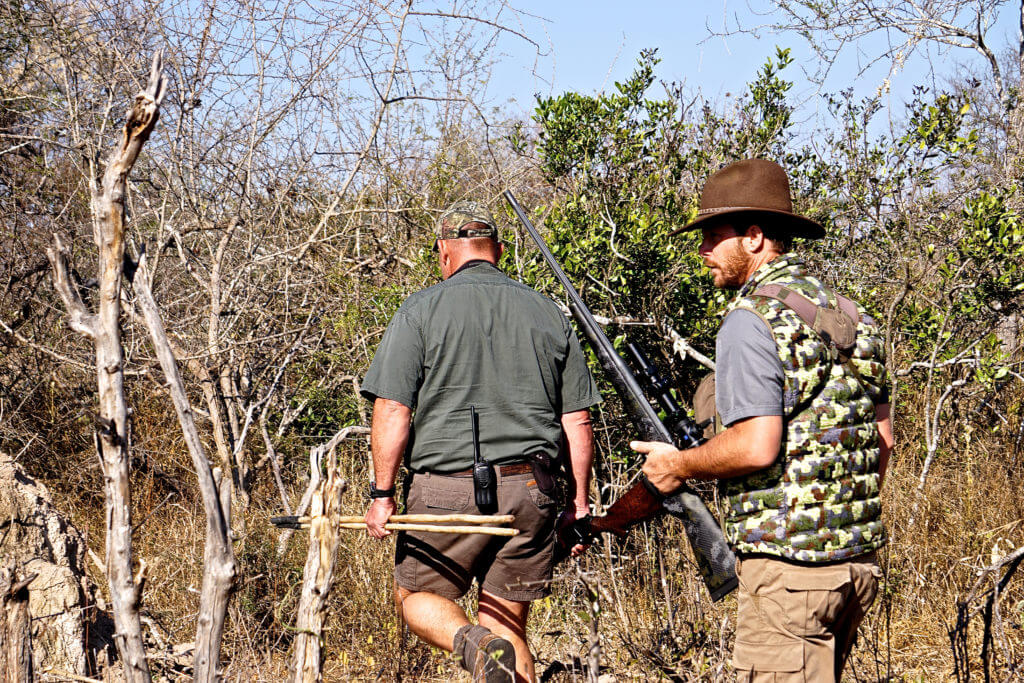
Hunting in Africa is fascinating, and I was thoroughly enjoying myself as another day dawned and we took up a fresh buffalo trail. This time there were only three, but the tracks looked big like old bulls had made them. As we walked, following the trackers along the sign, my mind drifted back to the evening before.
We had followed a herd of bulls all afternoon, finally coming up with them just as the sun set over the distant hills. Crawling on our bellies, we closed the distance to just under 100 yards and set up against the boles of a tree clump. Ian, my PH, studied the buffalo for what seemed like forever before proclaiming them all too ugly or too young to shoot, even the impossibly wide one whose giant horns spanned perhaps 43 inches.
MAGICAL ENCOUNTER
Then Ian did something remarkable; he stood and allowed the bulls to see us. Strangely, the normally-spooky buffalo simply looked us over and then formed a large semi-circle, heads high and facing us as we walked obliquely along, inspecting their ranks. All those massive bulls standing regal, unafraid and dangerous, were an incredible sight. They had finally turned, to thunder away into the growing dark. It was a magical moment, and one that Ian later told me was the finest buffalo encounter he’s ever had in Mozambique.
My rifle felt good on my shoulder as I followed Ian through the Bush, remembering those ranks of big bulls. I hoped we would come up on some more today, and that this time there would be an old one, wide and massive, with deep, curving horns. The tracks led on, and we walked deeper into the Sandveldt.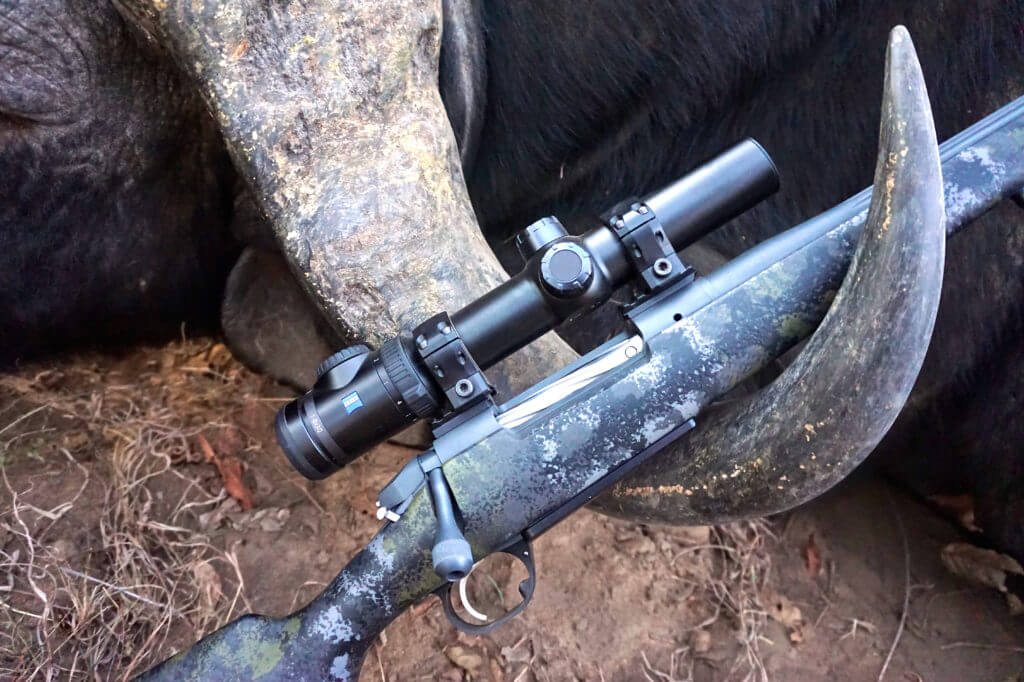
In addition to his rifles, Teddy also took along a 12 gauge Fox side by side, of which he said, “No better gun was made.” There are many nice Foxes on the secondary market, many responsibly priced. If you’d like a new, custom-made one (and have escaped the current economic problems) take a look at the Foxes being made by Connecticut Shotgun Manufacturing Company, but be prepared for some sticker shock.
In 2008, Winchester issued a T.R. Commemorative version of the model 1895, along with special ammunition to celebrate the 150th anniversary of T.R.’s birth.
The 300 grain bullets leave the muzzle at just over 2,200 feet per second, which would prove lethal medicine for all the big critters in North America and many that Teddy and Kermit pursued in Africa.
It’s engraved with a couple of likenesses of the 26th President and sports iron sites. It’s a top ejector and not well suited for use with a scope. But for gun collectors and history buffs the “big stick” is irresistible.

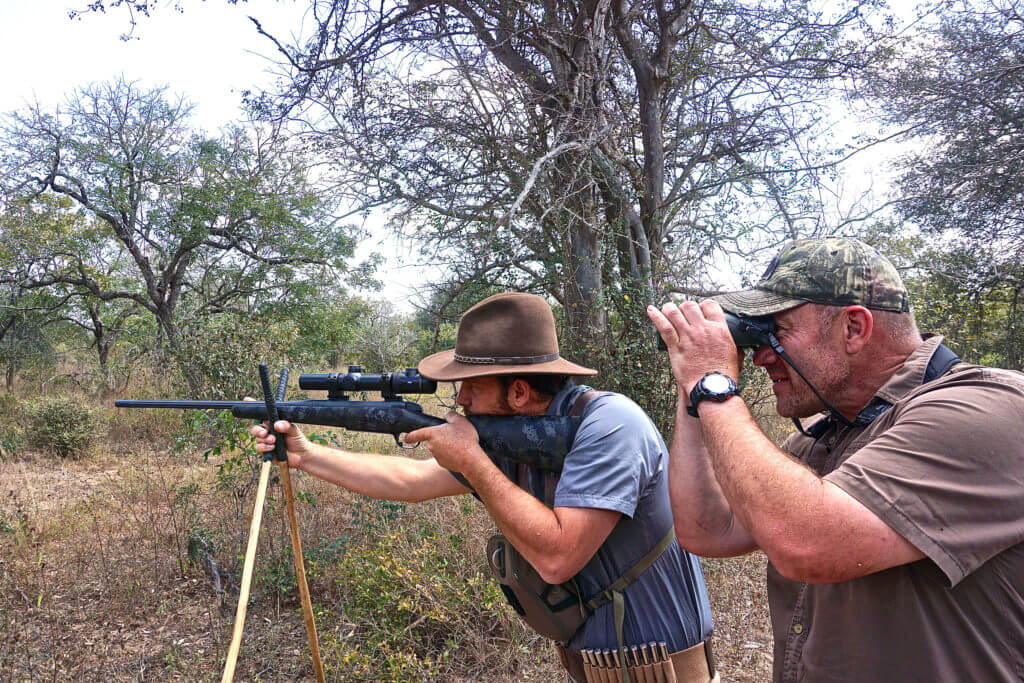
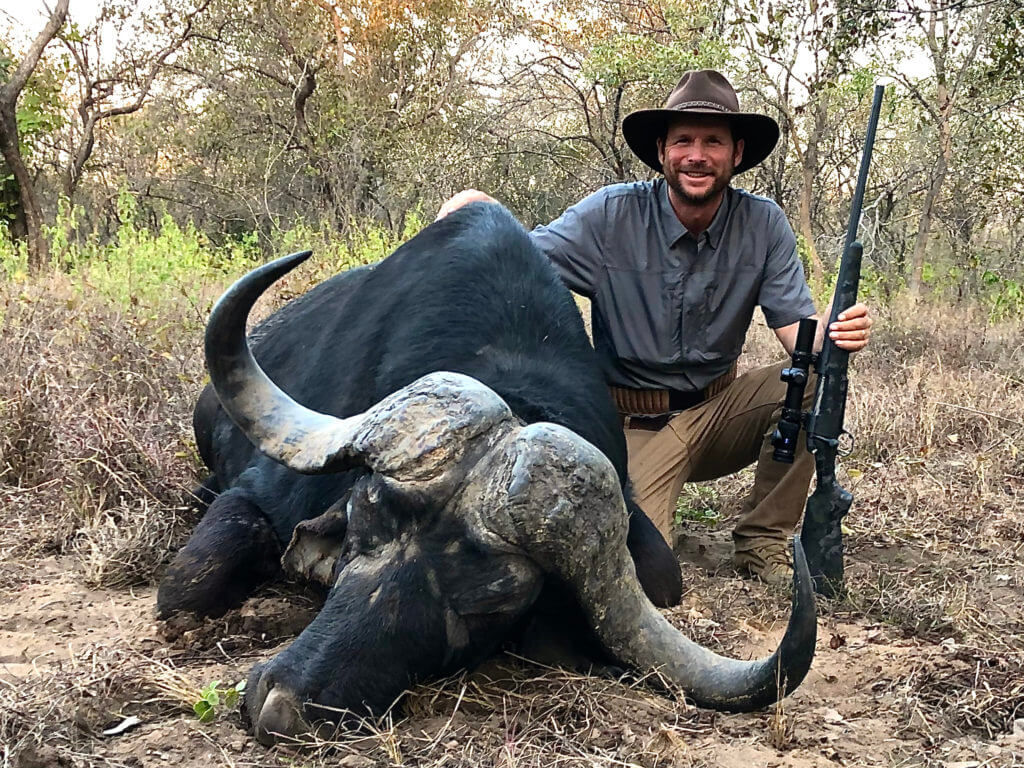
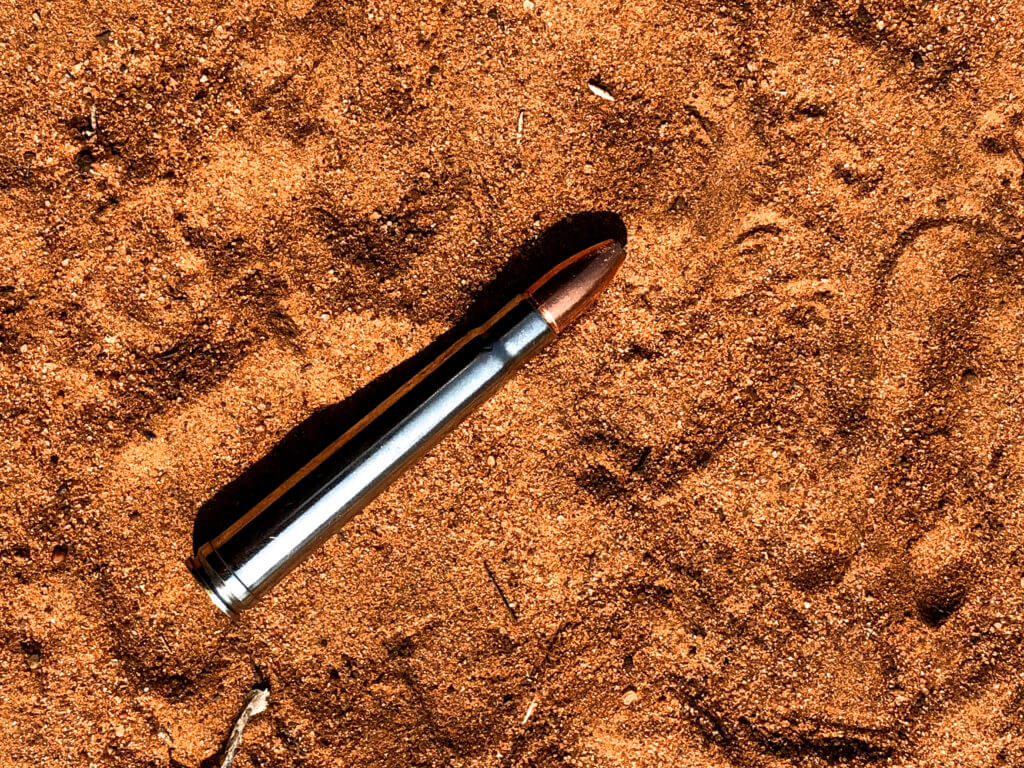
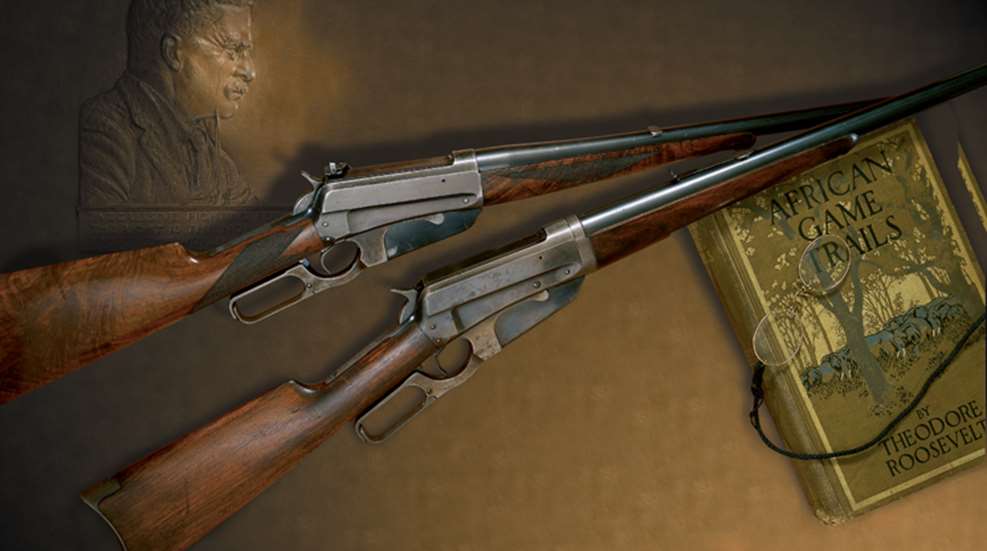 In April of 1909, Teddy Roosevelt and his son Kermit headed to Africa for what would be a nearly year-long safari. They took many guns with them, and while TR had a bigger, more powerful .500/450 caliber Holland & Holland double rifle along he called his .405 Winchester model 1895 lever action rifle the “Big Stick!” With the .405’s he and Kermit shot the continent’s most dangerous game.
In April of 1909, Teddy Roosevelt and his son Kermit headed to Africa for what would be a nearly year-long safari. They took many guns with them, and while TR had a bigger, more powerful .500/450 caliber Holland & Holland double rifle along he called his .405 Winchester model 1895 lever action rifle the “Big Stick!” With the .405’s he and Kermit shot the continent’s most dangerous game.